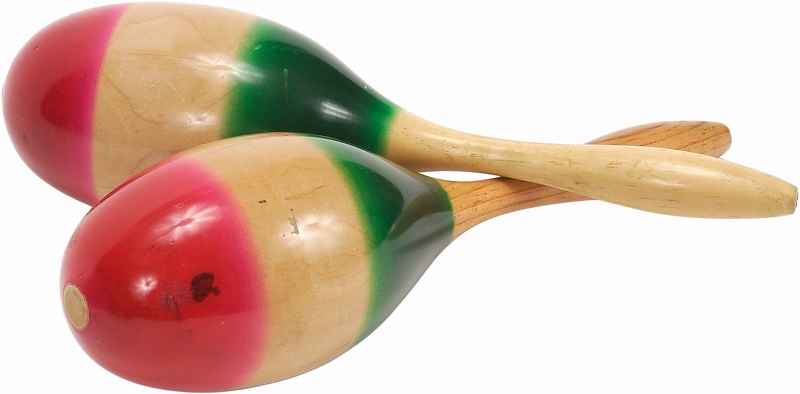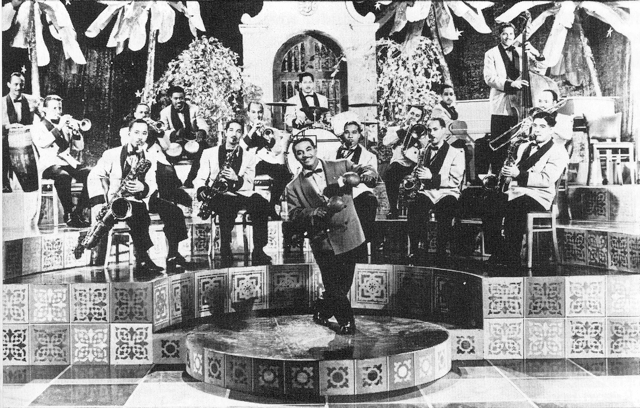Het is ‘Wist je dat?’ –woensdag!
(Geschreven door: Roberto Gutierrez)
We willen graag met jullie allerlei info en weetjes delen over salsa/latin cultuur: de muziek, de dans, de artiesten en heel belangrijk de geschiedenis. Voor sommigen zullen bepaalde feitjes al bekend zijn en voor anderen totaal niet. Het gaat erom dat iedereen iets meekrijgt van deze mooie cultuur.
Vandaag hebben we het over het instrument: Maracas.

Wist je dat:
- Maracas hun oorsprong vinden bij inheemse stammen in Zuid Amerika (Auracana indianen) en de Caraibische eilanden (Taïno indianen).
- Maracas oorspronkelijk gemaakt werden van kalebas(achtige) vruchten. Er werd aan de onderkant en gat gemaakt om de vruchtpulp eruit te laten ontsnappen. Daarna werd de vrucht gedroogd en gehard. Uiteindelijk werd de vrucht gevuld met kiezelstenen of zaden.
- Tegenwoordig Maracas vooral worden gemaakt van leer, hout of plastic.
- Maracas oorspronkelijk werden gebruikt in religieuze ceremonies. Er wordt gezegd dat de medicijn-mannen de kalebasvruchten zagen als symbolen voor bovennatuurlijke wezens en de zaden of kiezels als de hoofden van de goden. De maracas werden dus geschud om de goden op te roepen.
- In de 19e en 20e eeuw werden de maracas toegevoegd aan veel Latijns-Amerikaans en Caraibische ritmes.
- Maracas niet altijd als’ paar’ worden gebruikt. Bijvoorbeeld in de Puertoricaanse muziek ‘Bomba’ kan een enkele maraca worden gebruikt, die qua omvang groter is dan de maracas in een paar. Bij Cubaanse ritmes worden de maracas wel als paar gespeeld.
- de inhoud niet gelijk is aan elkaar als maracas als paar worden gebruikt. Op deze manier ontstaat er een afwijkend geluid als ze bespeeld worden.
- Een maracas speler een ‘maraquero’ wordt genoemd. De zangers in een salsaband zijn meestal de maraqueros. Eén van de bekendste is Machito
- Er veel verschillende ritmes zijn die met de maracas gespeeld kunnen worden. Check de video om een idee van de ritmes te krijgen.
We hopen dat je deze weetjes interessant vond. Wil je meer weten over Maracas? Voel je vrij om lekker op onderzoek uit te gaan op internet. Je kunt veel over dit instrument terug vinden!
It’s ‘Did you know?‘ – Wednesday!
(Written by: Roberto Gutierrez)
We would like to share with you lots of information about our salsa/latin culture, about the music, about the beautiful dance, the amazing artists and the rich history and traditions. For some of you the facts that we share might already be known, for others it might be new information.
The topic of this weeks blog are the instruments Maracas.

Did you know that:
- Maracas came from indigenous tribes of South America (auracanian indians) and the Caribbean Islands(taïno indians).
- The instruments originally were made of gourd fruits like calabash or the Puertorican ‘higuera’ tree fruit. A hole was made in the fruit to let the pulp ‘escape’. After that the fruit was dried and hardened. Finally it was filled with seeds or pebbles. Maracas, nowadays are usually made of leather, wood or plastic.
- The indigenous tribes used the maracas in religious ceremonies. It is said that the instruments were seen as symbols for supernatural beings. The witch doctors saw the seeds or pebbles as the heads of the gods and they shook the instruments to summon these gods.
- That in in the 19th and 20th century the maracas were added in Latin American and Caribbean rhythms.
- That maracas are not always used as a pair. For example in Puertorican ‘Bomba’ music only one maraca can be used. The size of the instrument is larger than the ones used in pairs. In Cuban music the instruments are used in pairs
- The contents of maracas are not equal when used in pairs. This makes the sound of the maracas disctinct to each other when being played.
- The person who plays the maracas is called a ’maraquero’. Usually the singers in a salsa band are the ones playing maracas. One of the most famous maraqueros is Machito.
- There are a lot of different rhythms that can be played with the maracas. Check out this video to have an idea.
We hope you liked these facts and if you want to know more about maracas please feel free to search more information about this instrument on the internet.





